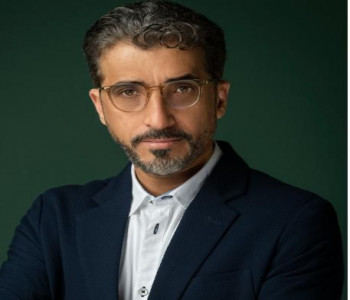Algeria and Morocco race to export gas to Europe: Nigeria is the beneficiary
Algeria and Morocco race to export gas to Europe: Nigeria is the beneficiary
Morocco and Algeria are competing to export gas to Europe, as the two sides seek deals to complete the project aimed at laying pipelines from Africa to the North.
The Moroccan project aims to establish a gas pipeline extending for 6,000 kilometers from Nigeria, passing through 11 countries along the Atlantic coast, before reaching Moroccan territory and transferring it to Spain.
On the other hand, Algeria seeks to revive a project dating back decades, which links it to the Nigerian gas fields through Niger along a length of 4,000 kilometers.
In the wake of the world energy crisis, recent months have witnessed rapid developments in the file of linking Europe with African gas, in light of extensive political and diplomatic moves by the two countries. Its most prominent features appeared in the two neighbors signing a set of agreements with the Nigerian side and the rest of the concerned countries, and the issuance of statements by the officials of the two countries highlighting the feasibility and importance of each project.
Morocco and West Africa
Moroccan King Mohammed VI allocated a large space in his last speech on the anniversary of the Green March to talk about the Moroccan-Nigerian gas pipeline project, describing it as strategic.
“We want it as a strategic project for the benefit of the entire West African region, which has a population of more than 440 million people,” King Mohammed VI said of the Moroccan-Nigerian gas pipeline.
The length of the Nigerian-Moroccan gas pipeline project is 6,000 km. It will cut across Benin, Togo, Ghana, Cote d'Ivoire, Liberia, Sierra Leone, Guinea, Guinea-Bissau, Gambia, Senegal and Mauritania, all the way to Morocco, according to AFP.
The project, which has not yet set a timetable for completion, will allow the transfer of more than 5,000 billion cubic meters of natural gas to Morocco before it is connected directly to the Morocco-Europe pipeline (GME) and the European gas network.
The gas pipeline project between Nigeria and Morocco was announced at the end of 2016. Last September, representatives of Morocco, Nigeria, Senegal and Mauritania signed two memoranda of understanding in the Mauritanian capital, Nouakchott, according to BBC.
Last October, the Maghreb Arabe Presse Agency published a joint statement saying that the two memoranda “confirm the commitment of the parties within the framework of this strategic project, which, once completed, will provide gas to all West African countries and will open a new, alternative route for export towards Europe.”
Trans-desert pipelines
A day before the speech of the Moroccan monarch, Algeria, which is a major producer and supplier of oil and gas and owns two export pipelines to Italy and Spain, confirmed its commitment with Nigeria to implement jointly launched structural projects, including the Trans-Saharan gas pipeline, during the meeting that brought together the foreign ministers of the two countries on Saturday, according to Algerie Presse Service.
This confirmation comes after the Algerian and Nigerian energy ministers signed a memorandum of understanding to implement the Trans-Saharan gas pipeline project on the sidelines of the third ministerial meeting on the pipeline project.
The signatories to the memorandum agreed to complete a feasibility study and deepen studies to complete the Algerian-Nigerian gas pipeline project, which starts from Abuja through Niamey and from there to Algeria in preparation for its export to Europe.
The idea of establishing a trans-Saharan gas pipeline dates back to the 1970s, before a memorandum of understanding was signed about it in 2002, but the project has not been officially launched until today, according to Modern Diplomacy.
The length of the Nigerian-Algerian gas pipeline, known as the Trans-Saharan Gas Pipeline, is about 4,128 km, with an annual capacity of 30 billion cubic meters, while the cost of its completion is estimated at about $13 billion, according to Reuters.
Nigeria, the biggest beneficiary
Nigeria, which signed separate agreements with both Algeria and Morocco, will be the largest beneficiary of the two projects, as it has the largest proven gas reserves in Africa with about 200 trillion cubic feet, most of which are untapped, according to Bloomberg.
The Nigerian government wants to monetize more of this resource to replace crude oil, which is the country's main commodity and the production of which is in sharp decline due to massive pipeline theft and underinvestment in the field, according to Bloomberg.
Nigerian Minister of Petroleum Resources Timipre Sylva revealed to Bloomberg that his country has proven gas reserves of 206 trillion cubic feet.
Nigeria, which currently produces 8 billion cubic feet of gas per day, aspires to increase its production to 12.2 billion cubic feet and thus increase its exports to Europe with the efforts of the old continent to end its dependence on Russian supplies.
In the same interview, Sylva referred to his country's work to extend gas pipelines to Europe via Morocco and Algeria, saying, “During this decade, we focus on developing gas resources, and many of it will go to Europe.”
He added, “We are building a gas pipeline that extends to Europe through Algeria, and we are in partnership with Algeria to build a gas pipeline that will transport our gas directly to Europe. We have another plan with Morocco to build another pipeline that will transport Nigerian gas to the European continent.”
“We have completed approximately 70% of the pipeline that will transport gas from southern Nigeria to its north. After the completion of this local project, we will be ready to transfer it outside the country to Niger and then across it to Algeria,” he continued.
As for the Moroccan line, Sylva explained that it is still in the stage of the economic feasibility study, adding, “We are working hard on it, and it will cross 15 African countries, and we will transport gas through it to Morocco and from there directly to Europe.”







